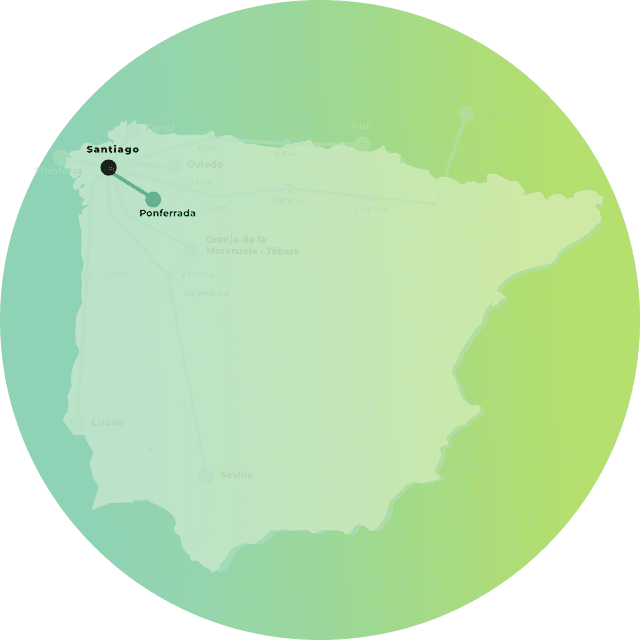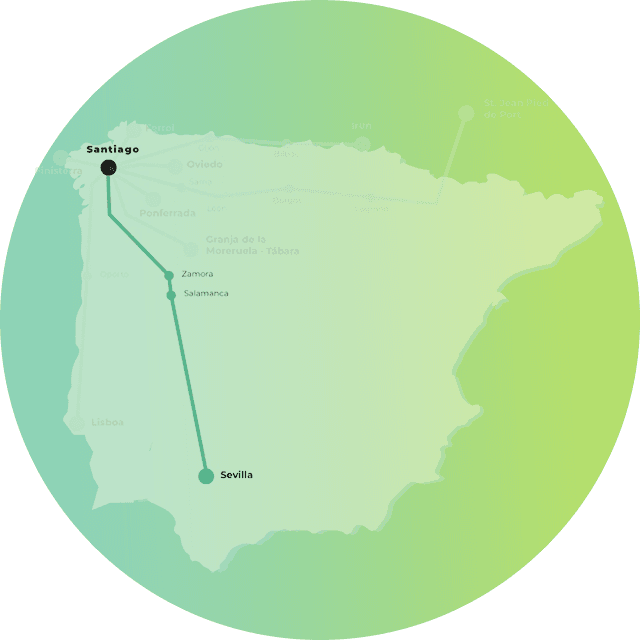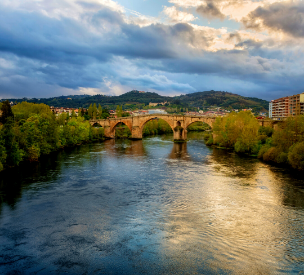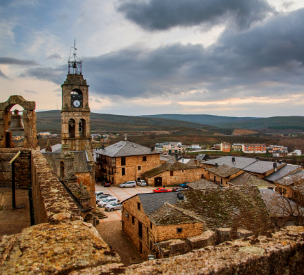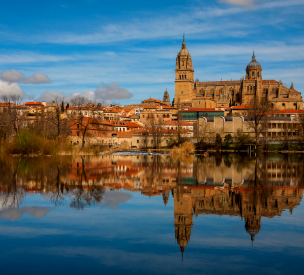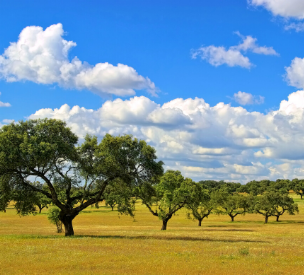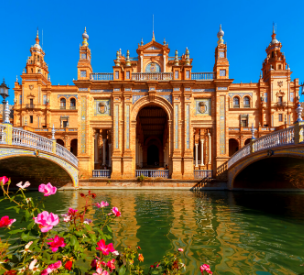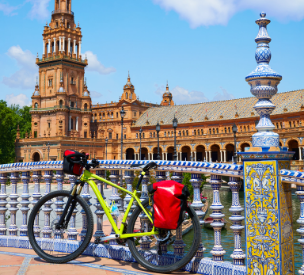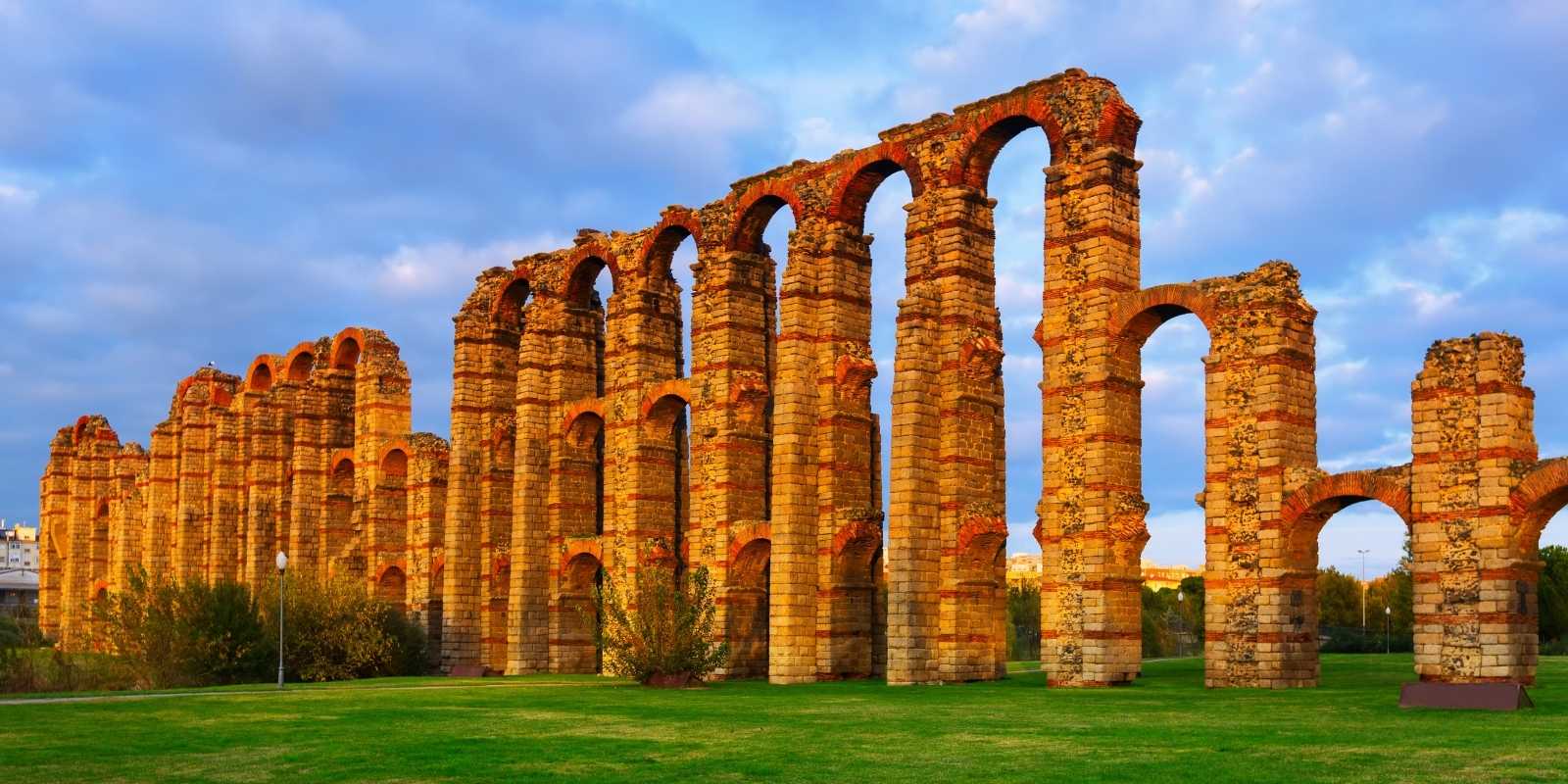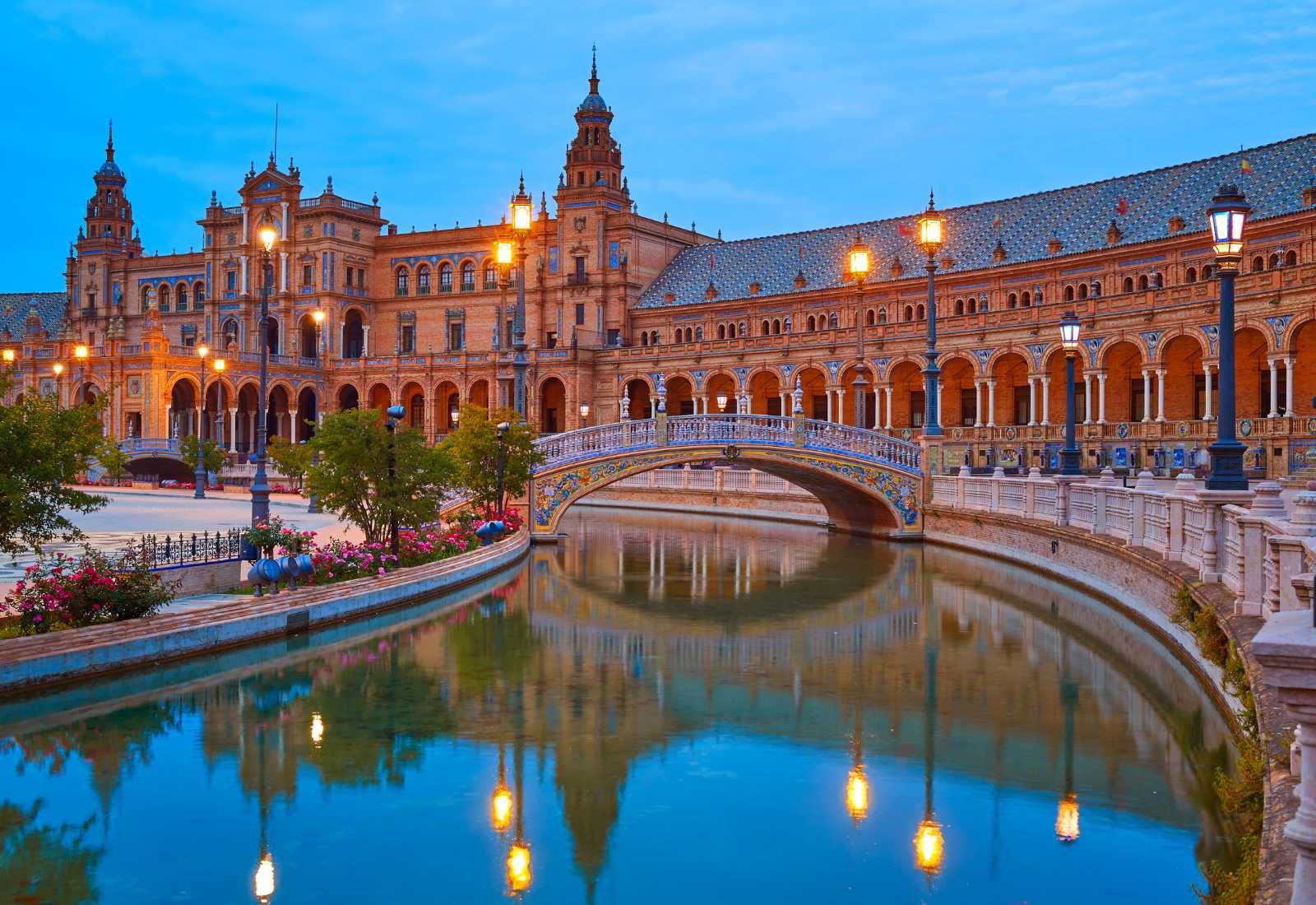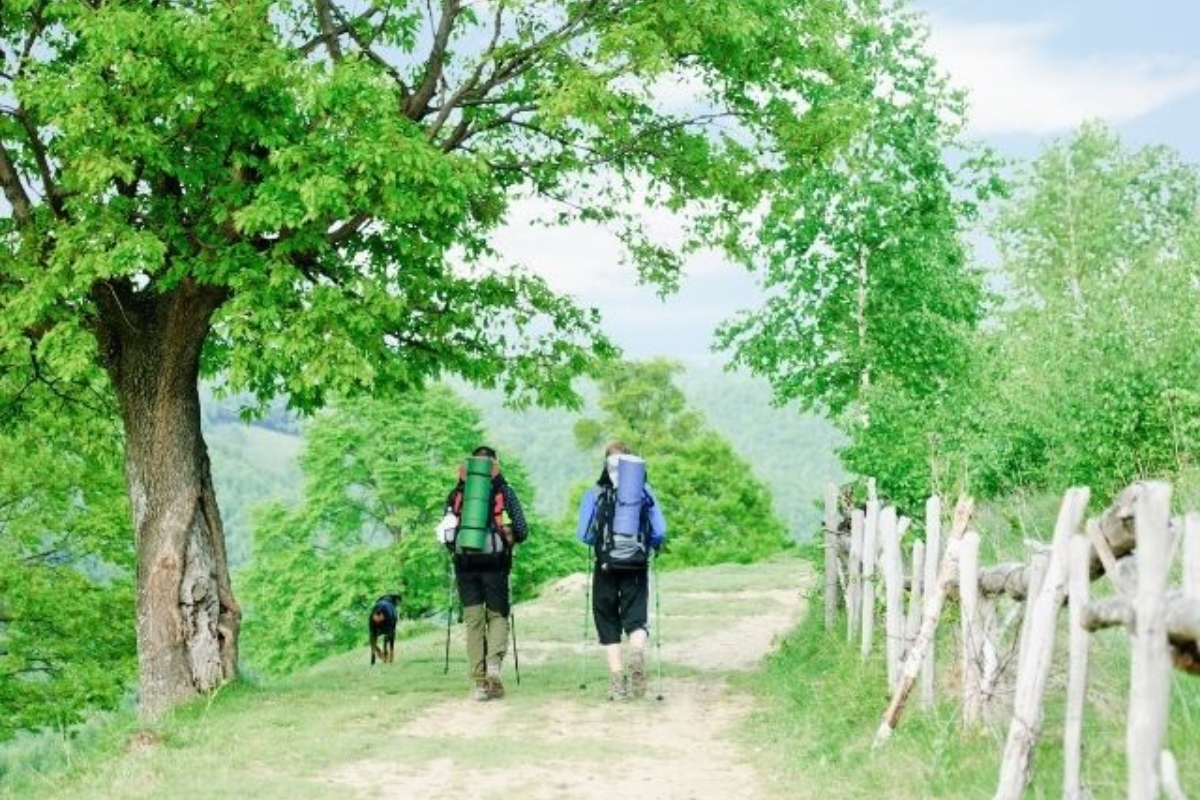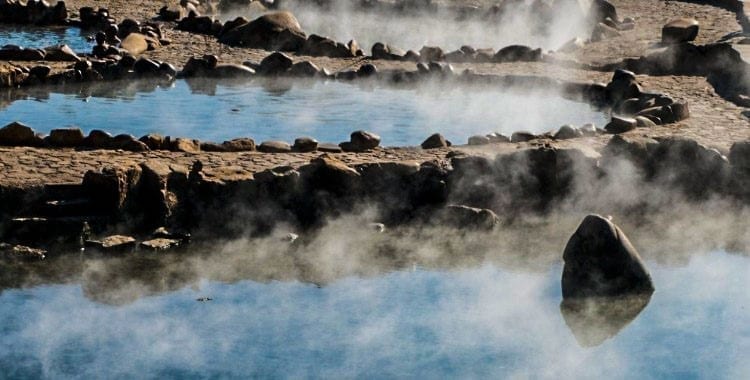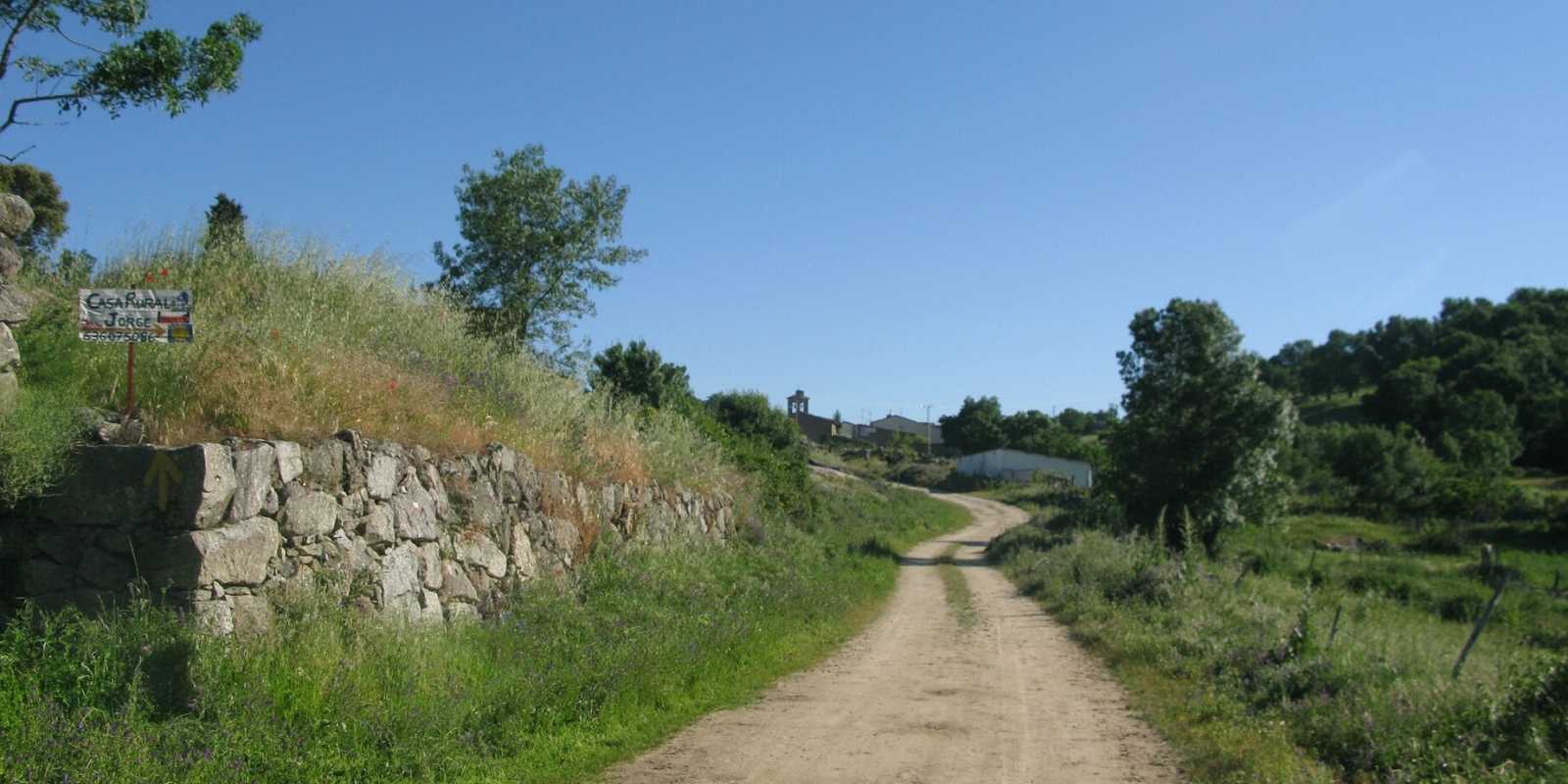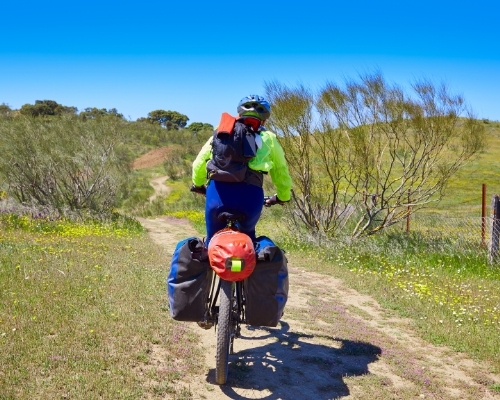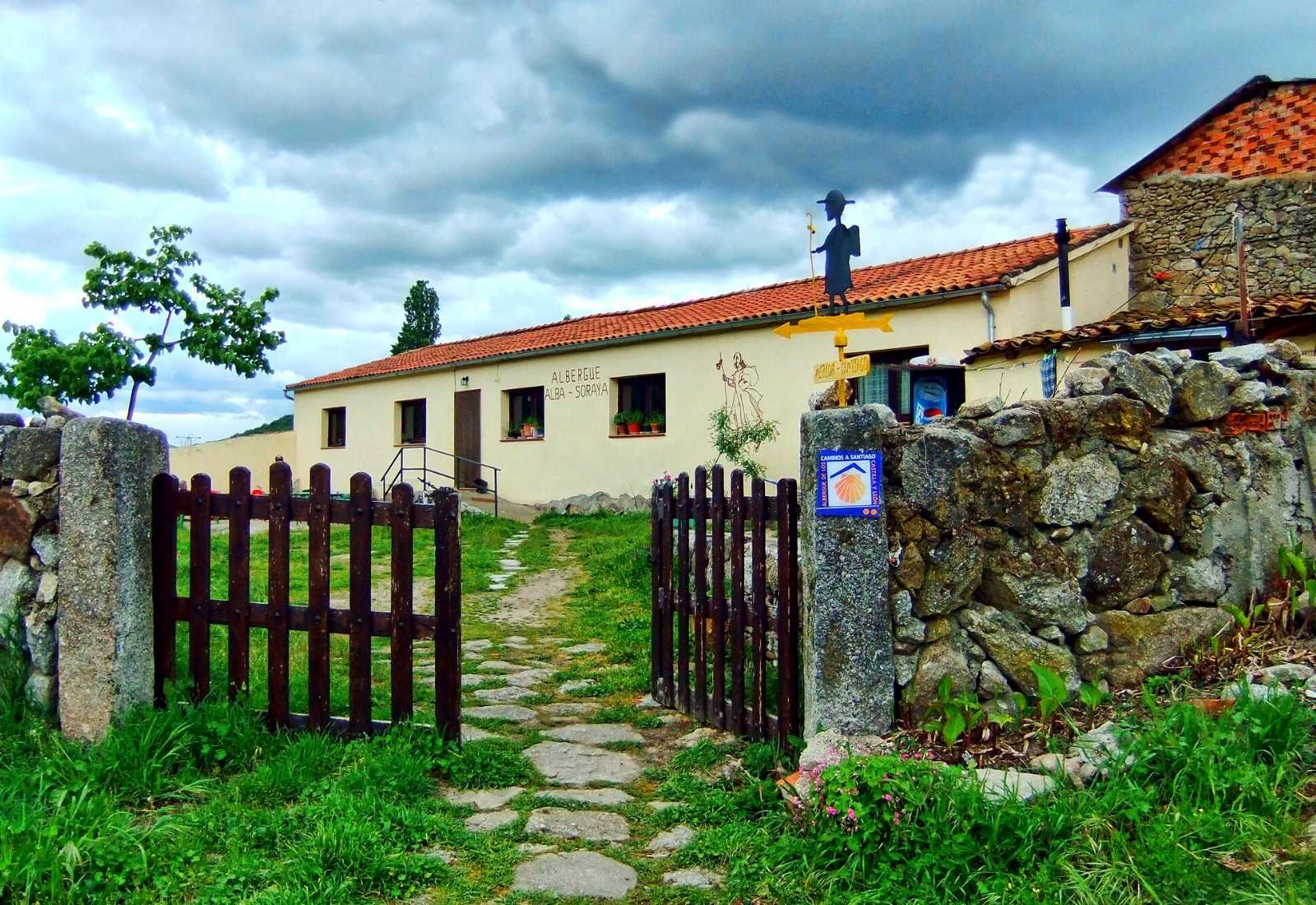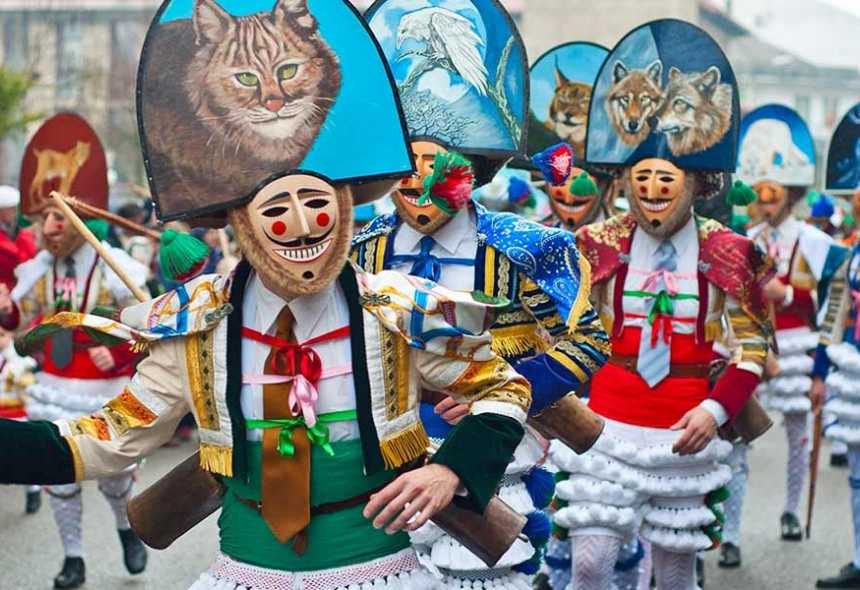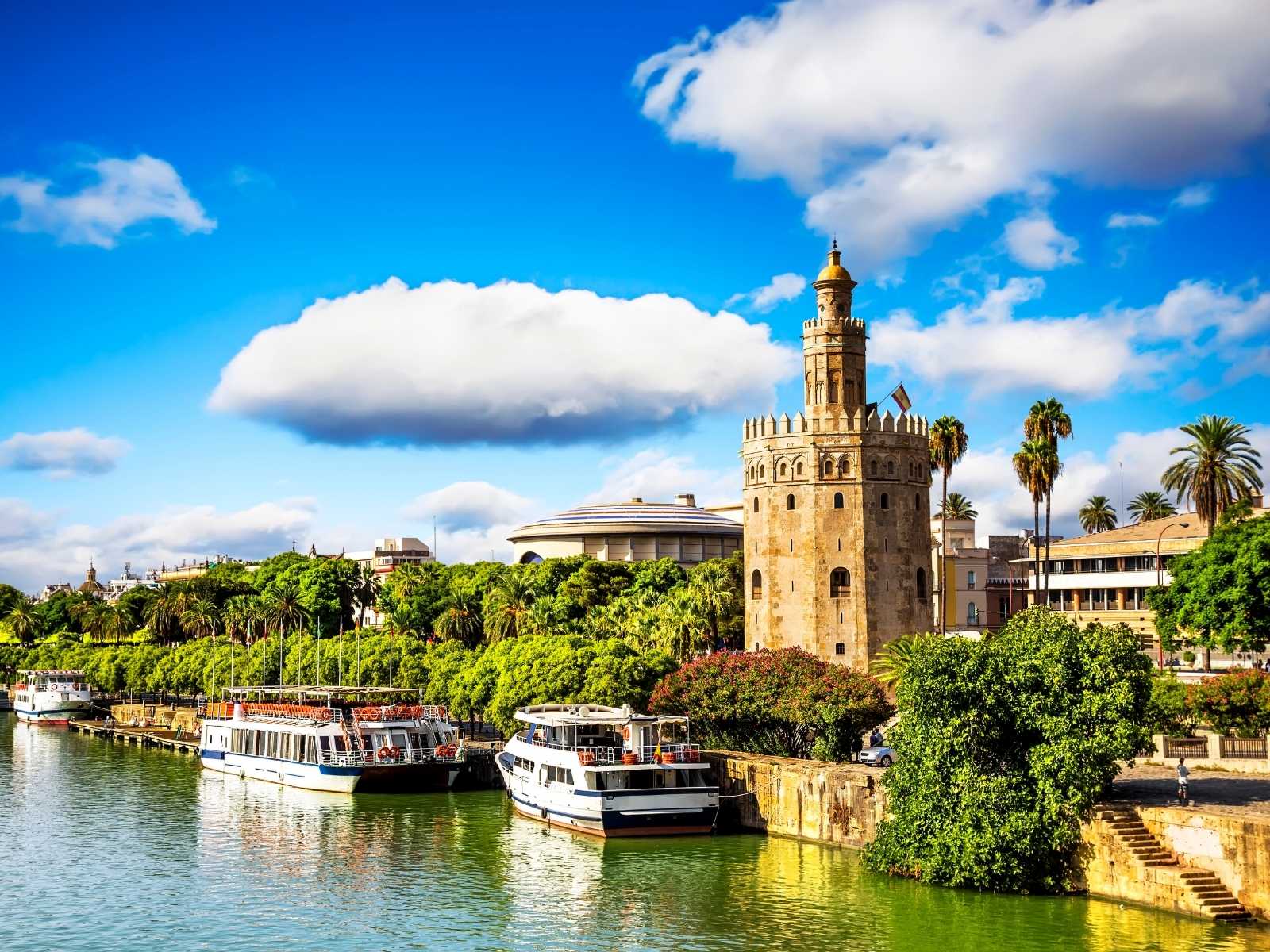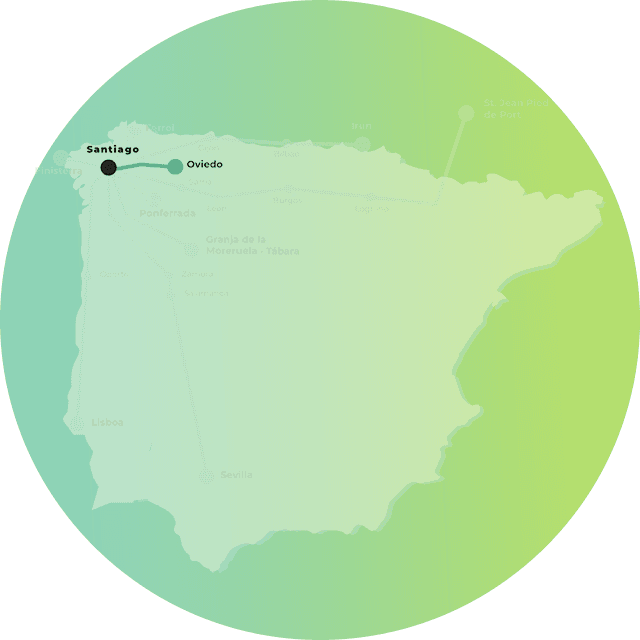The Vía de la Plata (Silver Way)
The longest route to reach Santiago de Compostela.
This route of the Camino de Santiago is one of the oldest and most fascinating, inheriting the Roman road that connected the south with the north of the Iberian Peninsula. Over the centuries, it has been traveled by merchants, legionaries, and pilgrims, leaving behind a cultural and historical legacy that persists in its towns and cities.
The The Vía de la Plata (Silver Way) is a journey of great beauty and contrast, crossing varied landscapes and vast lands that reflect centuries of history. Its lower traffic makes it an ideal option for those looking for a quieter and more authentic Camino, where solitude and nature accompany each stage.
Services we offer on the Vía de la Plata
Included in all our routes
- Accommodation booking selecting the best lodgings according to your budget.
- Luggage transport between stages.
- Practical information about the Camino in a detailed guide.
- Phone assistance en route we’re by your side for any questions or incidents.
- Travel insurance with broad coverage.
On group tours
- Accompanying guides professional support throughout the Camino.
- Support vehicle available during the stages.
Optional services
- Meals and diets: option to add breakfasts or half board.
- Private transfers to/from the point you need.
- Bicycle rental (mountain or electric bikes).
Map of the The Vía de la Plata (Silver Way)
The map shows the complete route of the The Vía de la Plata (Silver Way), from Seville, in Andalusia, to Santiago de Compostela, in Galicia, Spain. This ancient pilgrimage route, approximately 1,000 km long, follows the path of the Roman road that connected the south to the north of the peninsula, passing through historic cities such as Mérida, Cáceres, Salamanca, and Zamora.
At the bottom, the elevation profile of the route is shown, highlighting the contrasts between the plains of the south, the dehesas of Extremadura, and the mountain passes of the Meseta and Galicia.
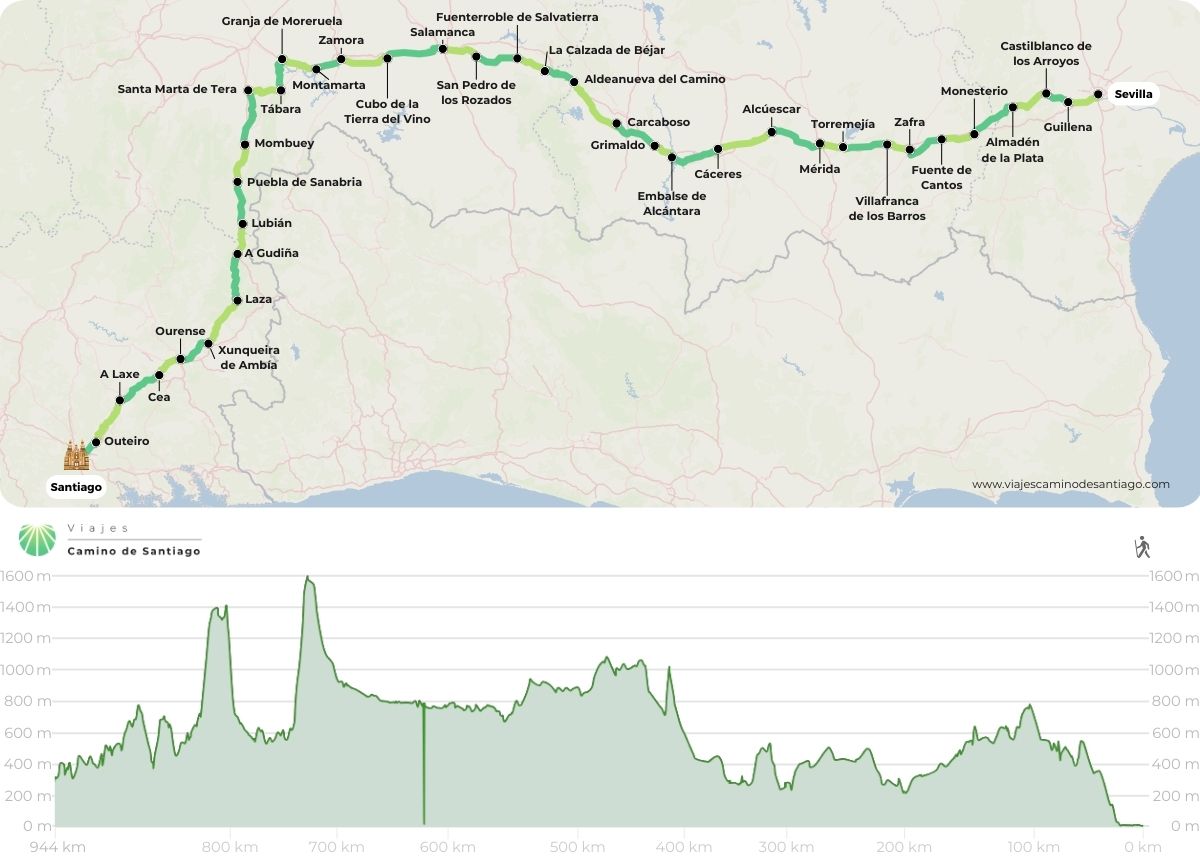
Information about the The Vía de la Plata (Silver Way)
Why choose the The Vía de la Plata (Silver Way)?
1,000 kilometers of Spanish landscapes from south to north.
Although it is not one of the most popular Camino de Santiago routes, the Vía de la Plata is gradually gaining followers, especially among pilgrims who seek to escape the overcrowding and tourist atmosphere of other routes, or are in search of an experience that preserves the essence of the first pilgrimages.
However, the entire route is perfectly marked with yellow arrows, making it almost impossible to get lost; it also has a more than sufficient infrastructure of accommodations and services for the walkers who travel this route every year.
But one very important factor to consider when undertaking the Vía de la Plata is to avoid the hot months. In summer, temperatures can be extremely high, especially in the south of Spain. Many pilgrims suffer from heatstroke, which forces them to abandon their journey. For this reason, we recommend avoiding this route, especially in July and August.
What to see and do on the The Vía de la Plata (Silver Way)?
All the diversity of landscapes and ancient Iberian civilizations.
Where to start the The Vía de la Plata (Silver Way)?
From Seville
The magical city of the Guadalquivir River is established as the traditional starting point of the Vía de la Plata . If you decide to take the Vía de la Plata (Silver Way) from Seville to Mérida, in addition to enjoying all the attractions of one of the most touristy cities in Spain, you will be amazed as you walk for 9 stages through Andalusian and Extremaduran lands, passing through olive groves and vast dehesa landscapes that gradually fade as you head north of the peninsula. From this point, you will walk a total of 23 stages until you connect with the Sanabrés Way in Granja de Moreruela or 27 stages until you link up with the French Way in Astorga.
From Merida
Mérida is an idyllic starting point for the Vía de la Plata. Known by the Romans as Augusta Emerita, this city in Extremadura breathes Roman history through every corner, with its amphitheater, Roman bridge, and the famous Temple of Diana. A place that will take you back in time before you begin your pilgrimage. On the Vía de la Plata (Silver Way) from Mérida to Salamanca, you will walk a total of 10 stages until you connect with the Sanabrés Way in Granja de Moreruela; or 17 stages until you link up with the French Way in Astorga.
From Salamanca
The splendid university city of Salamanca is a true symbiosis of history, culture, tradition, architecture, and knowledge. The southern half of the Salamanca section of this route holds an important Roman legacy. You can still distinguish parts of the Roman Road, such as sewers, milestones, and Roman bridges. On the Vía de la Plata (Silver Way) from Salamanca to Puebla de Sanabria, you can walk the route in 8 stages to connect with the French Way in Astorga or 4 stages to connect with the Sanabrés Way in Granja de Moreruela.
Stages of the Vía de la Plata (Silver Way) to Santiago de Compostela
The Vía de la Plata (Silver Way) is one of the oldest and most fascinating Jacobean routes, rich in history, culture, and stunning landscapes. Along its approximately 1,000 kilometers, from Seville to Santiago de Compostela, pilgrims traverse ancient Roman roads, vast dehesas, and monumental cities that have witnessed centuries of passage. Through these links, you will discover the main stages, their distances, points of interest, and useful tips to make the most of this challenging and enriching journey.
As mentioned, the Vía de la Plata offers two options to reach Santiago de Compostela. In the stage 23, in Granja de Moreruela, pilgrims can deviate towards the Sanabrés Way, a variant that crosses Galicia through Ourense before reaching Santiago de Compostela. On the other hand, those who follow the main route of the Vía de la Plata to Astorga, in stage 27, connect with the French Way, joining the busiest Jacobean route from this point onward. Therefore, you would need to add the corresponding final stages of each route.
The Villages of the Vía de la Plata (Silver Way)
History of the Vía de la Plata (Silver Way)
We begin this journey through ancient history, from the possible birth of this route.
A commercial route
According to historians, the first steps preceding this route were during the time of the Tartessians, where it is believed that there existed a route with the western part of the peninsula called the “Tin Route” in relation to the metal that was transported and traded along these routes.
The Roman domination of the Iberian Peninsula
However, the origin is uncertain, as the first deliberately documented steps are those of the Roman roads. The Vía de la Plata was once a set of paved Roman roads that connected the city of Augusta Emerita (Mérida) with Asturica Augusta (Astorga). These two cities were, perhaps, the most important in ancient Lusitania, and maintained the commercial link between the south and the north of the peninsula.
The Arabs gave it its name
Its name is not related to the precious metal, but comes from the Arabic term “balat,” meaning “paved road,” referring to the solid Roman roads that structured the peninsula and facilitated trade and communication between the south and the north. After the Muslim occupation, not only was the peninsula reconquered, but also this ancient route, reclaimed by the devoted pilgrims of Santiago the Apostle as a pilgrimage itinerary, which encompasses all the Andalusian Jacobean routes, towards the city where the saint was buried. Thus, the name Ruta de la Plata was consolidated, remaining to this day.
Frequently asked questions about The Vía de la Plata (Silver Way)
The Silver Route starts in Seville and has almost 1,000 kilometres to Santiago de Compostela. In terms of days and stages, it can be divided in two ways, as it depends on which Camino you end up on. This route shares the final stretch with the French Way from Astorga (León), or with the Sanabrés Way in Granja de Moreruela (Zamora):
- For the French Way, it has 38 stages, therefore, 38 days;
- For the Sanabrés Way, it has 36 stages, therefore, 36 days.
Each stage is the distance you cover in one day, from the starting point to the end of the walk, where you will spend the night. The stages can vary in distance and difficulty, and it is important to note that they can be adjusted according to your pace and physical condition. Some pilgrims choose to divide certain long or hard stages, or lengthen those that are shorter or easier to walk. It all depends on having a place to sleep.
The Silver Route starts in Seville and has almost 1000 kilometres to Santiago de Compostela. As for the stages, it can be divided in two ways, as it depends on which Camino you end up on. This route shares the final stretch with the French Way from Astorga (León), or with the Sanabrés Way in Granja de Moreruela (Zamora):
- For the French Way, it has 38 stages;
- For the Sanabrés Way, it has 36 stages.
Keep in mind that this distance may vary depending on the possible variants or complementary and alternative paths that the pilgrim decides to take during the route. Each stage would be the distance you travel in a day, from the town of beginning to the end of the walk, where you will spend the night. The stages can vary in distance and difficulty, and it is important to note that they can be adjusted according to your pace and physical condition. Some pilgrims choose to split certain long or hard stages, or to lengthen the stages to a longer distance.
The total kilometers of the Silver Route from Seville depend on how you get to Santiago de Compostela. This historic route has two possible ‘endings’:
By the French Way from Astorga (León): about 1000 kilometres;
By the French Way from Granja de Moreruela (Zamora): about 970 kilometres.
It should be borne in mind that this distance may vary depending on the possible variants or complementary and alternative paths that the pilgrim decides to take during the route.
The Silver Route, one of the historic routes of the Camino de Santiago, crosses several important rivers, streams, creeks, reservoirs and lakes along its route from Seville to Santiago de Compostela. Among the most prominent rivers crossed by pilgrims on this route are:
- Guadalquivir (Seville)
- Guadiana (Mérida)
- Tagus (Cáceres)
- Tormes (Salamanca)
- Duero (Zamora)
Continuing along the French Way:
- Esla (Zamora)
- Órbigo (León)
- Sil (León)
- Miño (Lugo)
Continuing along the Sanabrés Way:
- Miño (Ourense)
- Ulla (A Coruña)
- Sar (A Coruña)
The Silver Route was not originally created as a pilgrimage route, but as a Roman road built during the Roman Empire. Its main purpose was to connect the cities of Emerita Augusta (present-day Mérida) and Asturica Augusta (present-day Astorga), facilitating trade, military transport and communications throughout the Iberian Peninsula.
Over time, this route became a strategic route for trade, warfare and the pilgrims from southern Spain who used it to reach Santiago de Compostela.
Silver’ has nothing to do with the transport of this material. The name of this route comes from the pronunciation of the Arabic term ‘balath’, which means ‘paved road’, in relation to the Roman road.
Posts related to The Vía de la Plata (Silver Way)
All the Routes of the Camino de Santiago
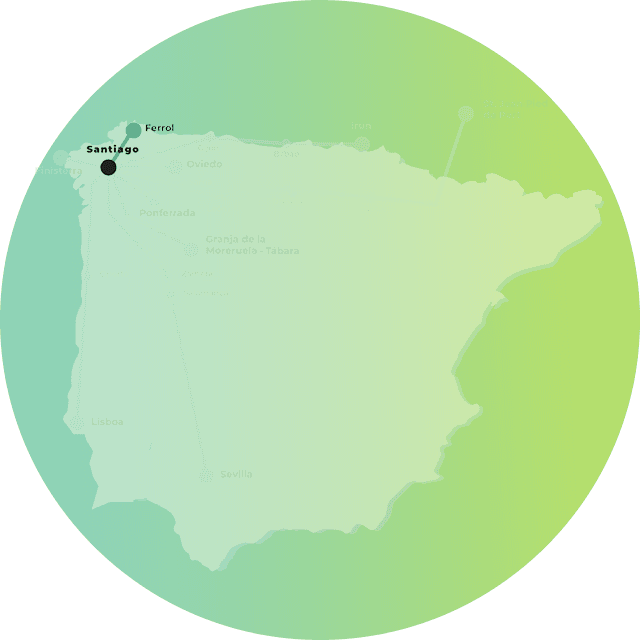
English Way
From Ferrol to Santiago de Compostela. Delve into the culture of villages of great military, naval and historical importance. 5 Etapas | 125 km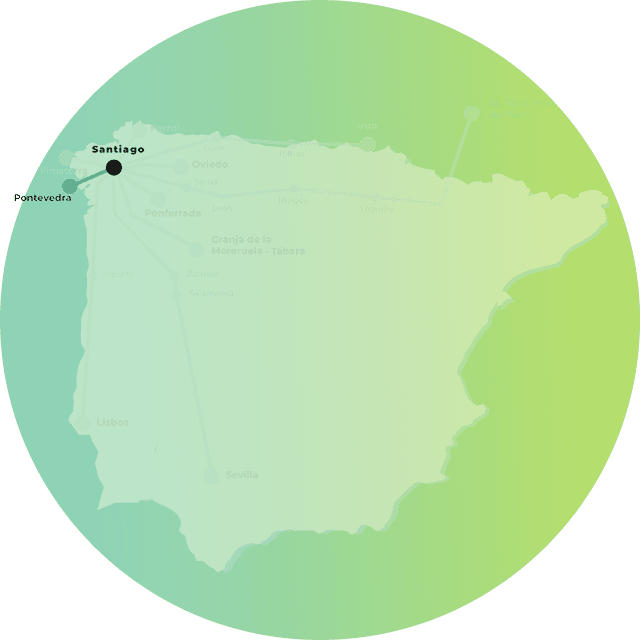
Father Sarmiento Way
The Father Sarmiento Way links Pontevedra to Santiago de Compostela, offering a scenic journey through beautiful landscapes. 6 stages | 142 km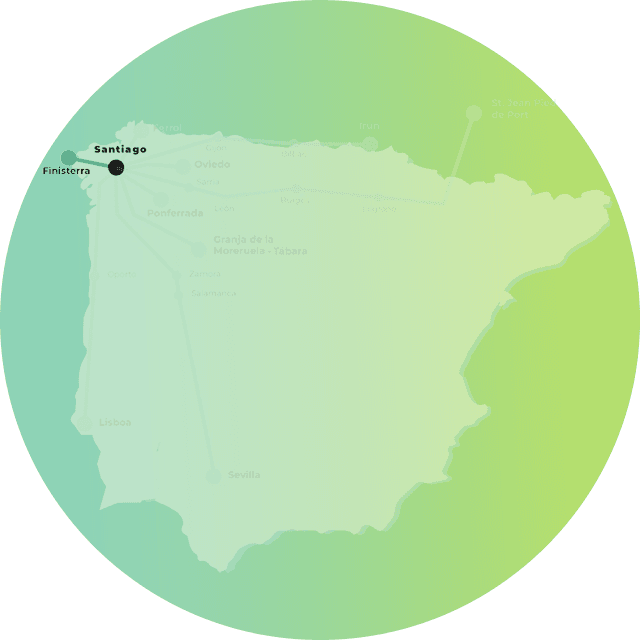
Finisterre and Muxía Way
From Santiago de Compostela to Muxía. A mystical and spiritual journey to the ends of the Earth 5 stages | 120 km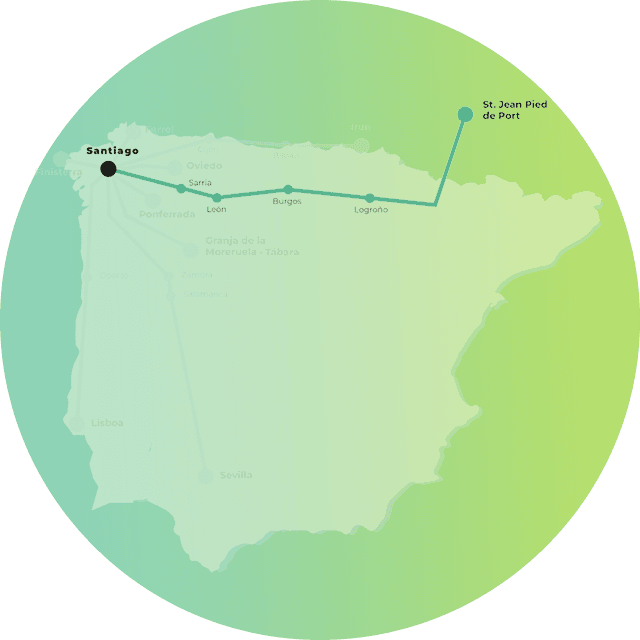
French Way
From Saint-Jean-Pied-de-Port to Santiago, trace Charlemagne’s path through the Pyrenees and trek 800 km on the French Way. 33 stages | 768 km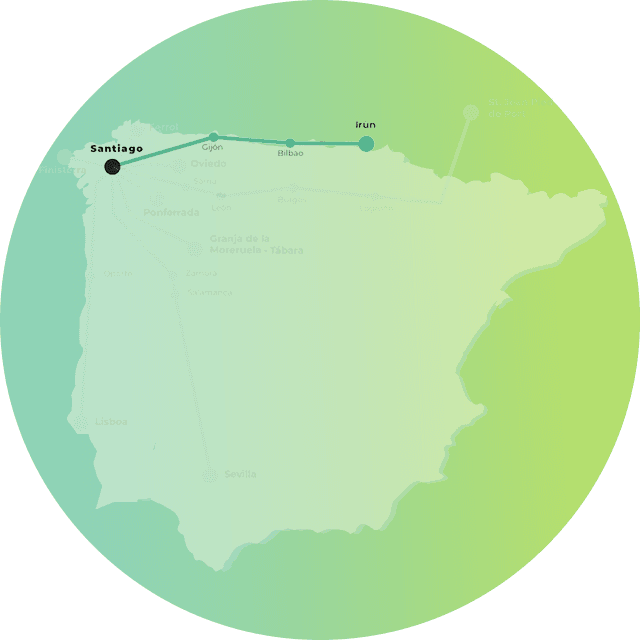
Northern Way
From Santiago de Compostela to Muxía. An unforgettable experience with breathtaking scenery 34 Stages | 820 km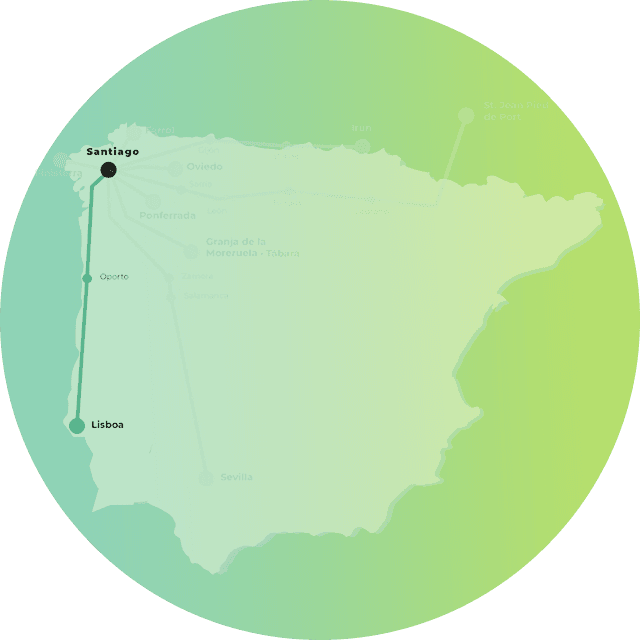
Portuguese Way
Starts in Lisbon and leads to Santiago de Compostela, offering a scenic journey through charming towns, coastal views, and culture. 27 stages | 620 km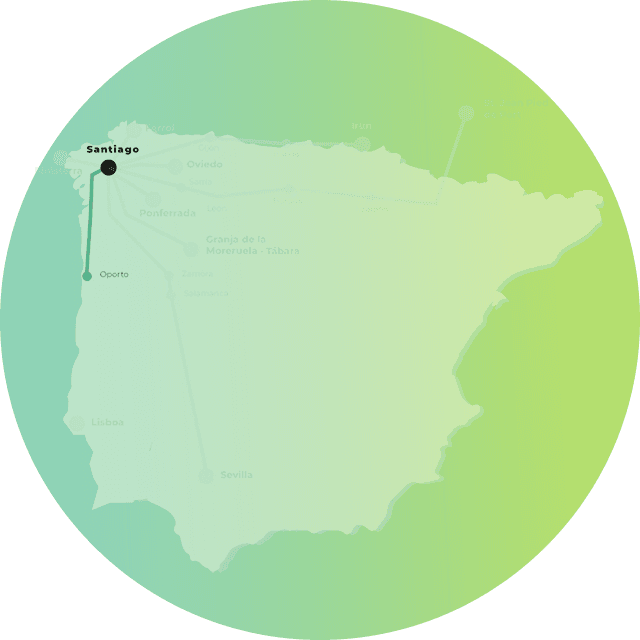
Portuguese Way along the coast
From Oporto to Santiago de Compostela. Total 194 km - 8 stages 8 Stages | 194 km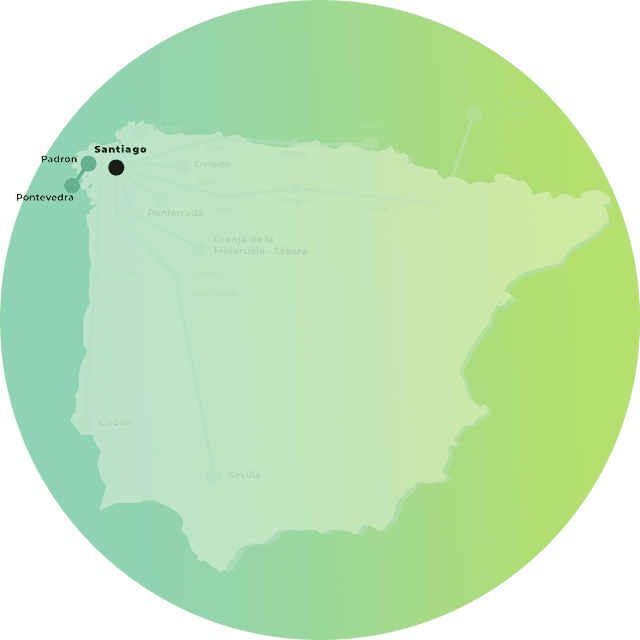
Portuguese Way: spiritual variant
From Pontevedra to Padrón. Total 81 km - 3 stages 3 stages | 81 km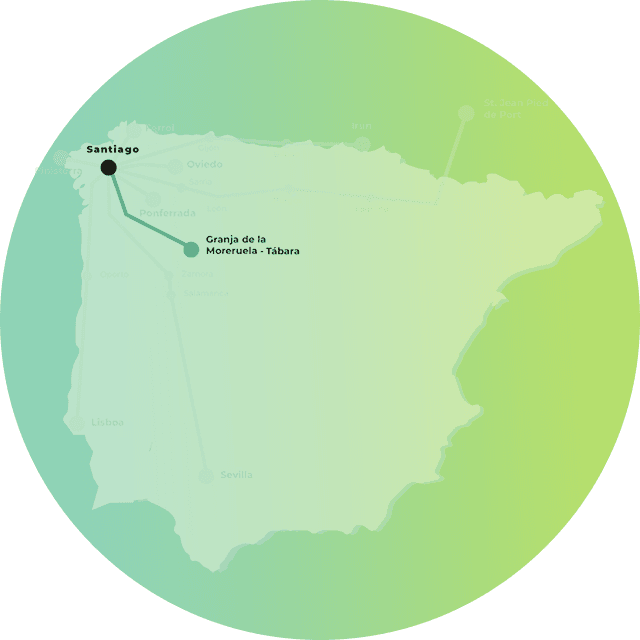
Sanabrian Way
From Granja de Moreruela to Santiago de Compostela. Total 365 km - 13 stages 13 stages | 365 km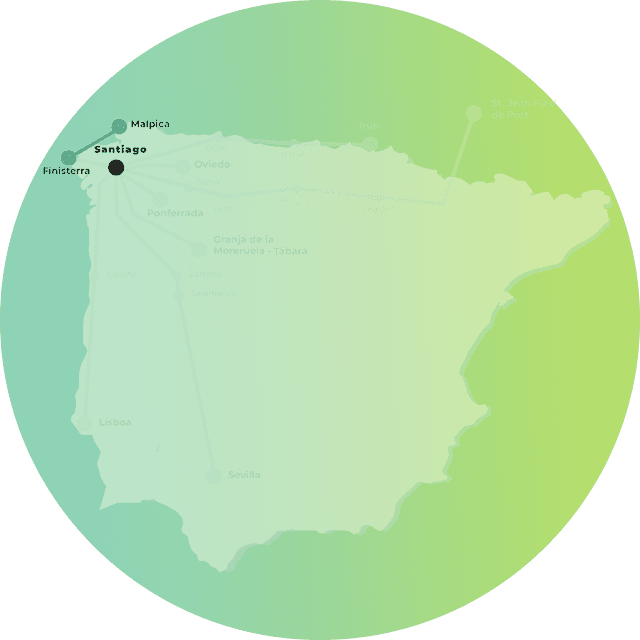
Way of the Lighthouses
From Malpica to Finisterre. A 200-kilometer journey along the coast and through the wildest of nature 8 stages | 195 km